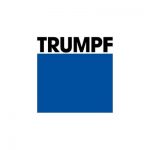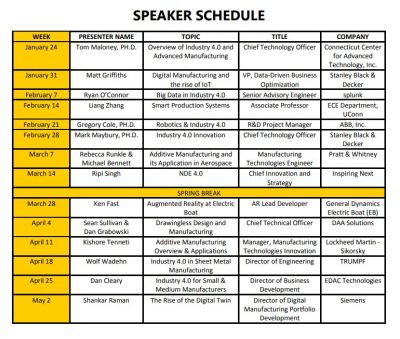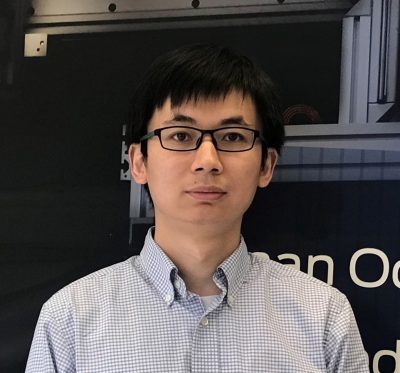UTC-IASE is proud to announce a new UConn project selected for funding by NASA that will focus on the design and operation of resilient deep space habits. A group of UConn researchers, along with partners from Purdue University, Harvard University, and the University of Texas at San Antonio will all be collaborating together on this project. The UConn team, led by Dr. Ramesh Malla, a professor in the department of Civil and Environmental Engineering, includes many school of engineering professors, such as Dr. Krishna Pattipati from Electrical and Computer Engineering, Dr. Jiong Tang from Mechanical Engineering, Dr. Song Han from Computer Sciences and Engineering, and Dr. Ashwin Dani from Electrical and Computer Engineering.
As part of the project, all of the groups involved were selected to be a part of the New Space Technology Research Institute (STRI), which helps with NASA’s goal of creating a sustainable human presence and infrastructure on other planets outside of Earth, such as the moon, mars, and other planetary bodies. The UConn team will be specifically involved with the Resilient ExtraTerrestrial Habitats Institute (RETHi), where they will work to design and operate resilient deep-space habitats that can adapt and sustain these harsh planetary environments, as well as recover after unexpected disruptions. This institute will receive approximately $15 million dollars, with the UConn researchers expected to receive approximately $3.25 million for their work, over a 5 year period in order to help fund the institute’s work. Professor Malla says that in order to achieve this goal, his team will focus on three main topics, which are the smart design, growth and architecture, context-based situational awareness and intelligent health management, and autonomous robotics for operation, maintenance, and recovery.
Professor Malla has been involved with space structure research for over 35 years now, and is an Associate Fellow of the American Institute of Aeronautics and Astronautics (AIAA), and also currently serves as the chair of ASCE’s Aerospace Division’s Technical Committee on Space Engineering and Construction. In conjunction with Dr. Malla’s accomplishments as well as a very experienced team from UConn, the team will work alongside RETHi to accomplish multiple key objectives from NASA. Through their project work, the team hopes to educate the next generation of engineers and scientists. They also hope to build strong partnerships with other industries and organizations across the globe, while simultaneously generating new knowledge to help guide future research development. The UConn team also plans on engaging undergraduate, graduate and postdoctoral students in their project, as well as utilizing partnerships between industrial partners, such as Collins Aerospace and ILC Dover.
Many UConn faculty members are excited about the university’s participation in this project, such as Dean Kazem Kazerounian, who said “This project is one in a long line of strategic research projects we have embarked on. Our inclusion in this project speaks to the strength or our faculty, and the track record of our research in this field”. Professor George Bollas, Director of the UTC-IASE, also added that “projects like the one led by Professor Mala include all the theoretical components that are at the core of the Institute’s foundation, such as robust and resilient design, operation under uncertainty, anomaly detection, accommodation and reconfiguration. We are excited to see this project produce research and talent that can lead to new technology in these areas.”
 On April 18
On April 18

 Please join the UTC Institute for Advanced Systems Engineering in welcoming Dr. Hongyi Xu, who has recently joined the Department of Mechanical Engineering as an Assistant Professor. Prior to joining UConn, he worked at Ford in their Research and Advanced Engineering Department from 2014 to 2019. At Ford, he worked on many projects such as structure optimization for vehicle lightweighting, integrated computational material engineering of carbon fiber composites, lithium-ion battery impact safety, fuel cell membrane analysis, and the design of mesostructured systems for additive manufacturing. He received his B.S in Mechanical Engineering from Northeastern University in China, a M.S in Mechanical Engineering from Tsinghua University in China, and a Ph.D. in Mechanical Engineering from Northwestern University in the US.
Please join the UTC Institute for Advanced Systems Engineering in welcoming Dr. Hongyi Xu, who has recently joined the Department of Mechanical Engineering as an Assistant Professor. Prior to joining UConn, he worked at Ford in their Research and Advanced Engineering Department from 2014 to 2019. At Ford, he worked on many projects such as structure optimization for vehicle lightweighting, integrated computational material engineering of carbon fiber composites, lithium-ion battery impact safety, fuel cell membrane analysis, and the design of mesostructured systems for additive manufacturing. He received his B.S in Mechanical Engineering from Northeastern University in China, a M.S in Mechanical Engineering from Tsinghua University in China, and a Ph.D. in Mechanical Engineering from Northwestern University in the US.